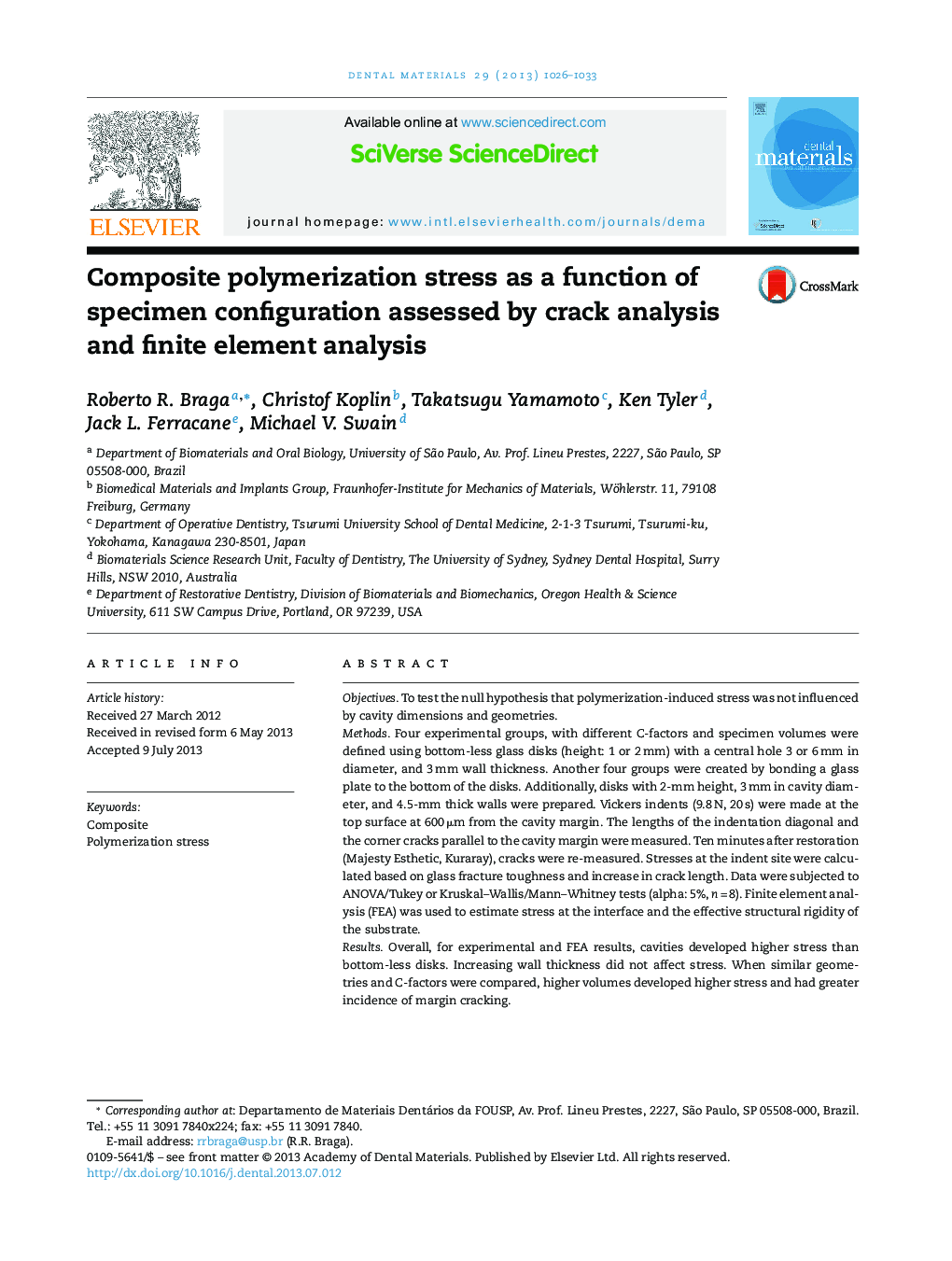| کد مقاله | کد نشریه | سال انتشار | مقاله انگلیسی | نسخه تمام متن |
|---|---|---|---|---|
| 1421079 | 986392 | 2013 | 8 صفحه PDF | دانلود رایگان |

ObjectivesTo test the null hypothesis that polymerization-induced stress was not influenced by cavity dimensions and geometries.MethodsFour experimental groups, with different C-factors and specimen volumes were defined using bottom-less glass disks (height: 1 or 2 mm) with a central hole 3 or 6 mm in diameter, and 3 mm wall thickness. Another four groups were created by bonding a glass plate to the bottom of the disks. Additionally, disks with 2-mm height, 3 mm in cavity diameter, and 4.5-mm thick walls were prepared. Vickers indents (9.8 N, 20 s) were made at the top surface at 600 μm from the cavity margin. The lengths of the indentation diagonal and the corner cracks parallel to the cavity margin were measured. Ten minutes after restoration (Majesty Esthetic, Kuraray), cracks were re-measured. Stresses at the indent site were calculated based on glass fracture toughness and increase in crack length. Data were subjected to ANOVA/Tukey or Kruskal–Wallis/Mann–Whitney tests (alpha: 5%, n = 8). Finite element analysis (FEA) was used to estimate stress at the interface and the effective structural rigidity of the substrate.ResultsOverall, for experimental and FEA results, cavities developed higher stress than bottom-less disks. Increasing wall thickness did not affect stress. When similar geometries and C-factors were compared, higher volumes developed higher stress and had greater incidence of margin cracking.Clinical significanceC-factor is a suitable predictor for polymerization stress in low compliance environments, particularly due to its simplicity. However, the influence of cavity size cannot be disregarded especially for the development of marginal cracking. The interaction between size, geometry and stiffness is likely to become more complex according to the complexity of the cavity shape.
Journal: Dental Materials - Volume 29, Issue 10, October 2013, Pages 1026–1033